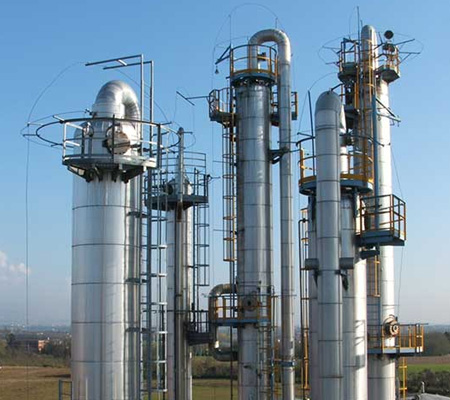Process-Scale Chromatography: Things To Consider For Maximizing ProductivityChromatography is a term used for separating components in a mixture. It mainly consists of Mobile and Stationary phase. When the mixture gets converted into a fluid body, it is called the mobile stage, which then is transmitted, through an arrangement that's holding another substance for further processing, this is called the stationary phase.
There are several processes of separating elements in a mixture, among them Distillation Column System is the most widely used process. The elements present in the mixture are distributed by Distillation column manufacturers, based on their affinity of the two-phase. Molecules having a higher attraction to the stationary phase moves comparatively slower than the others. The segregated particles are then analyzed, to known standards.

Process-scale separations require numerous columns that need to be packed and qualified for its use. The newer, modern techniques have reduced the risk factor to a considerable amount, but there is a list of things to be considered, before Column Packing.
Media: Media do affect column packing: particle size, its uniformity; forms such as liquid or the mobile used to pack the media needs to be considered. Following is an outlook on the list of things to study in the mobile stage to render effectiveness:
- Check the chemical adaptability of mobile phase with media.
- Any notable reduction in size or swelling of media in mobile phase needs to be considered while choosing.
- Thickness, and PH stability of the media
- Compatibility between the two phases: Mobile & Stationary.
- Distillation column manufacturers state that one of the best ways to separate elements in a mixture is by not stirring them since it can affect the flow through column making it non-uniform and hard to flow.
- To achieve the best result, let it the mixture settle gravitationally. The time for completion of the process varies with the elements present in the mix.
Column: Before using Column Packing or imbibing column into the process, make sure the surface is clean and isn't damaged.
- Inspect the components and follow the manufacturer’s instruction.
- Check the seals and other fixtures present, which might get affected- if assembled- in a temperature different from its storage space.
- Make sure that it has isolation valves.
- Use a column which is 10 cm in diameter or more to discover the best packing flow rate.
- Measuring the difference in pressure across the column will reveal the ideal flow rate.
- A well-designed system needs to have a pump that has a desirable flow rate, a bubble trap to remove and eliminate any dampness, an injection port, and pipework that are equal in diameter.
- The column needs to be adjusted, in such a way that it's level matches and remain the same with others, with air totally removed.
There are different types of Chromatography the major ones are Liquid, Gas, Thin-layer and paper Chromatography. At present, there are three distinct ways to pack chromatography columns: Flow pack uses continuous pressure or flow. Dynamic axial compression is done, by axially pressing the media slurry. Pack-in-place includes a column valve into the flow cells. Make sure to take note of the points mentioned, above to keep unexpected, unwanted events at bay.
The sample mixture is injected- into the mobile phase which runs through the resolute stationary phase. Since Chromatography is a unique and vita process in bioprocessing, FDA inspectors are mostly interested in reproducible packing properties of process-scale.
|
Article Directory /
Arts, Business, Computers, Finance, Games, Health, Home, Internet, News, Other, Reference, Shopping, Society, Sports
|